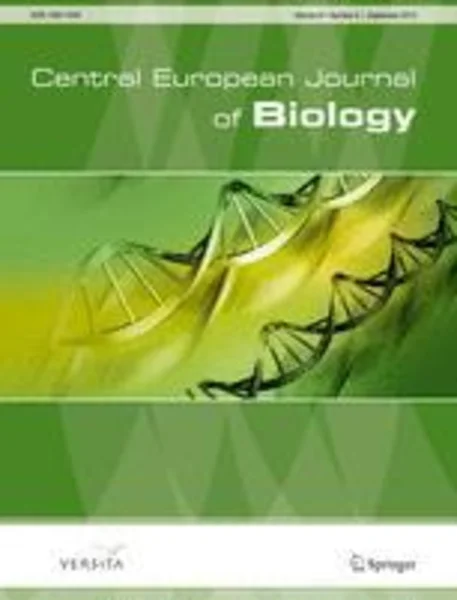-
influence of auxins on somatic embryogenesis and alkaloid accumulation in leucojum aestivum callus
جزئیات بیشتر مقاله- تاریخ ارائه: 1392/07/24
- تاریخ انتشار در تی پی بین: 1392/07/24
- تعداد بازدید: 723
- تعداد پرسش و پاسخ ها: 0
- شماره تماس دبیرخانه رویداد: -
in vitro cultures of leucojum aestivum are considered as an alternative for the production of galanthamine, which is used for the symptomatic treatment of alzheimer’s disease. we studied the effects of auxins 2,4-dichlorophenoxyacetic acid (2,4-d), 4-amino-3,5,6-trichloropicolinic acid (picloram), 3,6-dichloro-o-anisic acid (dicamba) at concentrations of 25 and 50 µm on the induction of embryogenic callus and its capacity to induce somatic embryogenesis and alkaloid accumulation. the embryogenic response of the explants was from 30% for 25 µm of dicamba to 100% for picloram (for both 25 and 50 µm). 2,4-d (50 µm) stimulated greater callus proliferation and somatic embryo induction as compared to the other auxins. polyethylene glycol (peg) stimulated somatic embryo maturation. callus grown on media containing 50 µm of auxins produced fewer phenolic compounds as compared with callus grown on media containing 25 µm of auxins. gc-ms analyses showed seven alkaloids in the in vivo bulbs and two to four in callus culture. galanthamine was detected in callus cultivated with 2,4-d (25, 50 µm), picloram (25 µm), and dicamba (50 µm). other alkaloids, trisphaeridine, tazettine, and 11-hydroxyvittatine were accumulated only in callus growing on medium with picloram (50 µm).
مقالات جدیدترین رویدادها
-
استفاده از تحلیل اهمیت-عملکرد در ارائه الگوی مدیریت خلاقیت سازمانی و ارائه راهکار جهت بهبود
-
بررسی تاثیر ارزش وجوه نقد مازاد بر ساختار سرمایه شرکت های پذیرفته شده در بورس اوراق بهادار تهران
-
بررسی تأثیر سطح افشای ریسک بر قرارداد بدهی شرکت های پذیرفته شده در بورس اوراق بهادار تهران
-
بررسی تأثیر رتبه بندی اعتباری مبتنی بر مدل امتیاز بازار نوظهور بر نقد شوندگی سهام با تأکید بر خصوصی سازی شرکت ها
-
تأثیر آمیخته بازاریابی پوشاک ایرانی بر تصویر ذهنی مشتری پوشاک ایرانی (هاکوپیان)
-
نگرشی بر چگونگی خلاقیت کودک با رویکرد بیومیمیتکس
-
بررسی تأثیر دعا بر بینش نیایشگر از نظر شیعه و کاتولیک
-
نانو مواد و ساختمان سازی های هوشمند
-
تنش برشی متوسط کف و دیواره ها در جداره ی صاف کانال ذوزنقه ای با بهترین مقطع هیدرولیکی با استفاده از نگاشت همدیسی
-
optimization of critical factors to enhance polyhydroxyalkanoates (pha) synthesis by mixed culture using taguchi design of experimental methodology
مقالات جدیدترین ژورنال ها
-
مدیریت و بررسی افسردگی دانش آموزان دختر مقطع متوسطه دوم در دروان کرونا در شهرستان دزفول
-
مدیریت و بررسی خرد سیاسی در اندیشه ی فردوسی در ادب ایران
-
واکاوی و مدیریت توصیفی قلمدان(جاکلیدی)ضریح در موزه آستان قدس رضوی
-
بررسی تاثیر خلاقیت، دانش و انگیزه کارکنان بر پیشنهادات نوآورانه کارکنان ( مورد مطالعه: هتل های 3 و 4 ستاره استان کرمان)
-
بررسی تاثیر کیفیت سیستم های اطلاعاتی بر تصمیم گیری موفق در شرکتهای تولیدی استان اصفهان (مورد مطالعه: مدیران شرکتهای تولیدی استان اصفهان)
-
آسیب شناسی کیفرگذاری موجود در جرایم خانوادگی موضوع کتاب پنجم قانون مجازات اسلامی ( تعزیرات ) مصوب 1375 ؛ از تبیین آسیب ها تا ارائه راهکارها
-
مطالعه تحلیلی نقش مایه های دارایی بافی یزد از منظر نشانه شناسی
-
بررسی عوامل تاثیر گذار بر تمایل به ادامه کسب و کار اینترنتی در بنگاه های کوچک و متوسط استان تهران
-
آراء بلاغی فخر رازی در جزء اول قران کریم
-
studies on some mechanical properties of pvc-wood fibre composite




سوال خود را در مورد این مقاله مطرح نمایید :